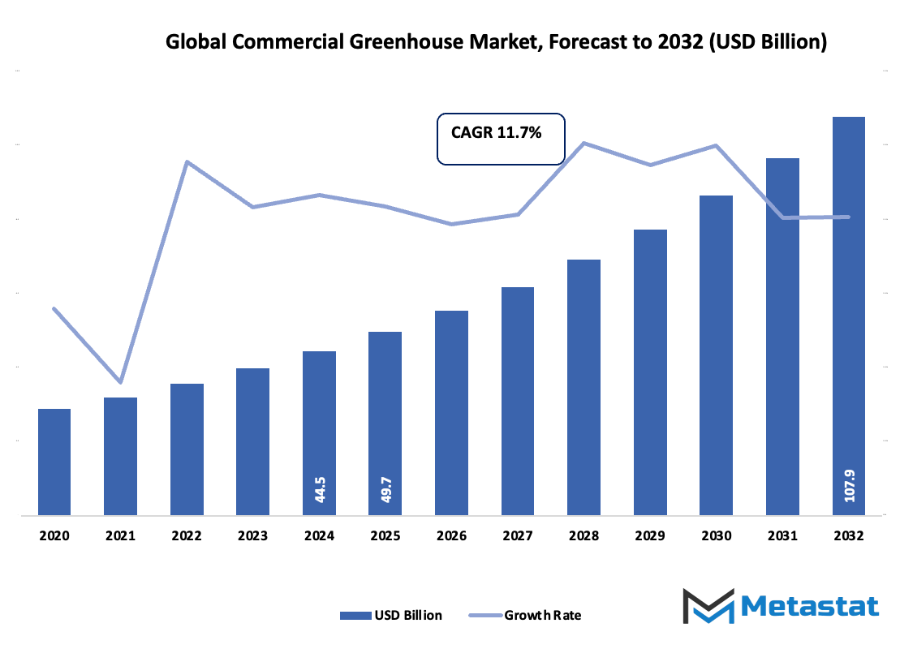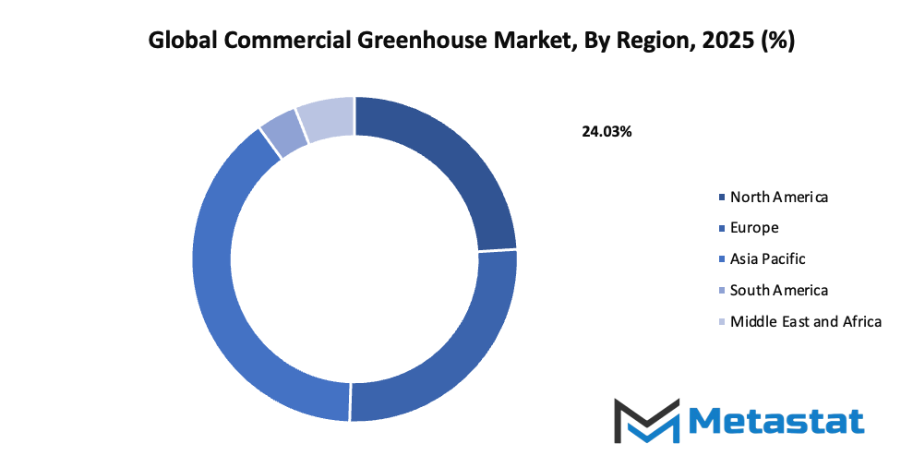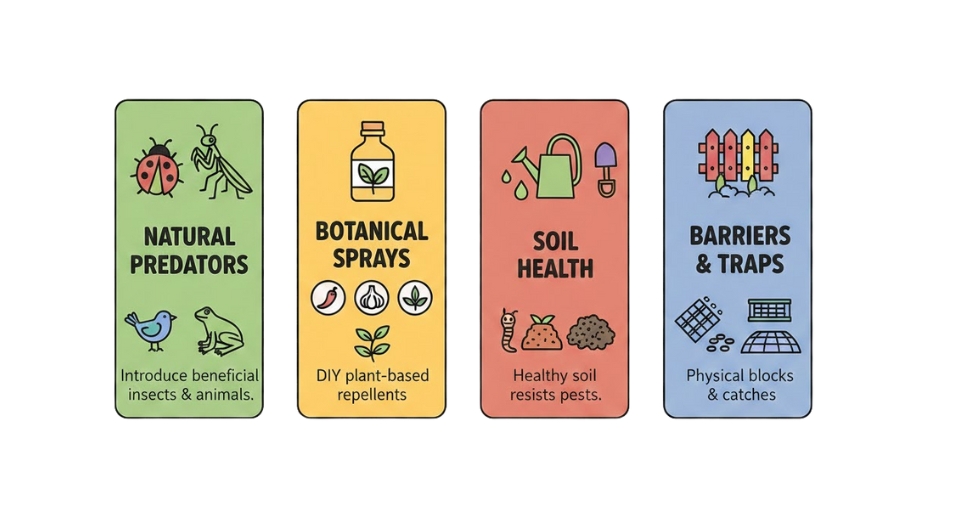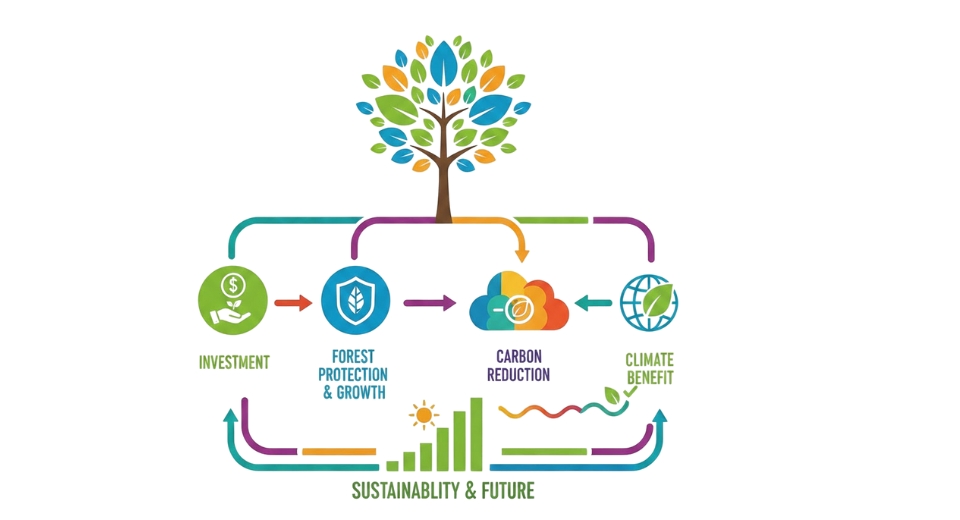Global Commercial Greenhouse Market - Comprehensive Data-Driven Market Analysis & Strategic Outlook
The global commercial greenhouse market is a separate industry with decades of technological development, changing farming styles, and the desire for safe food supplies. Its origins are rooted in humble glasshouses in nineteenth-century Europe, as farmers sought means to control growing seasons away from the whims of local climate. These primitive greenhouses were initially reserved for high-quality crops, catering to a niche elite market. With the passage of time, as urbanization increased and food supply chains grew in complexity, these buildings became the linchpin to the search for steady production.
- Global commercial greenhouse market worth around USD 49.7 Billion in 2025, reaching a about 11.7% CAGR from 2032, with the potential to cross USD 107.9 Billion.
- Glass Greenhouse have a contribution of around 37.8% market share, driving innovation and expanding applications through tough research.
- Key trends driving growth: Increasing demand for fresh, locally available fruits and vegetables, Increased focus on sustainable farming methods
- Chances are: Transition to new greenhouse technology to increase efficiency and productivity
- Key insight: The market will grow exponentially in value over the next decade, highlighting key growth opportunities.
- A key breakthrough occurred in the middle of the twentieth century when plastics replaced glass as the standard cover, lowering the price and accessibility of construction.

This advancement widened the door of commercial application immensely, changing the practice from choice estates and research facilities to agronomy on the mainstream. By the 1980s and 1990s, greater interest in food security and the effects of globalization introduced greenhouses into the mix as a potential answer to mass vegetable, fruit, and flower production. Consumer requirements also took a pivotal role in revolutionizing the business. As markets turned toward availability of fresh produce throughout the year, farmers started using greenhouse systems to sustain crops in any weather or season. Technology advancements were close behind with hydroponics, climate control, and computer monitoring of crops eventually becoming the norm. Not only did these technologies improve production efficiency, but they enabled farmers to provide higher quality products to increasingly health-conscious markets. Environmental issues and state policy have created additional layers to the narrative. Regulations of pesticide use and sustainability will push operators further towards more sustainable and intelligent production practices. Focus on minimizing water use and land will direct investment into more advanced greenhouse structures that can do more with less.
Now, the industry is at a juncture where technological developments and history come together. The global commercial greenhouse market will carry on the tradition of changing to meet customer needs, being cost-effective without causing damage to the environment, and reshaping how agriculture can benefit generations to come.
Market Segments
The global commercial greenhouse market is mainly classified based on Greenhouse Type, Crop Type, Component.
By Greenhouse Type is further segmented into:
- Glass Greenhouse: Glass greenhouse buildings will continue to be essential because of durability and effectiveness in bringing natural light. The new designs will include energy-efficient glass that maximizes sunlight penetration while keeping heat at optimal levels. These developments will enable growers to have consistent production cycles, enhance crop quality, and prolong the growing season in various regions.
- Plastic Greenhouse: Plastic greenhouse structures will see increased use with cost advantages and flexibility. Plastic films with improved insulation and light diffusion will enable the structures to sustain crops in harsh conditions. The lightweight construction and ease of use will promote use in developed as well as developing economies, enabling increased cultivation.
By Crop Type the market is divided into:
- Fruits: Commercial greenhouse fruit production will grow at a very fast rate because human beings will need more availability during the whole year. New irrigation technology and precision feeding of nutrients will enable growers to supply consistent yields. Strawberries, berries, and specialty fruits will become increasingly popular in greenhouses, fulfilling people's needs to enjoy fresh and healthy produce.
- Vegetables: Vegetables will control the greenhouse agriculture, driven by increasing urban demand and demands for organic farming. Greenhouse conditions will provide quicker growth cycles with decreasing pesticide use. Tomatoes, cucumbers, and peppers are among the vegetables that will be farmed on mass scales, providing cities with a constant and sustainable food source.
- Flowers & Ornamentals: Flowers and flowering plants will keep enjoying greenhouse farming, ensuring year-round supply and quality. Demand for ornamental plants will remain high in houses, offices, and venues. Sophisticated climate control systems will enable farming of various species, both conventional and exotic varieties of flowers irrespective of weather outside.
- Nursery Crops: Nursery crops will prosper with greenhouse culture since such conditions protect seedlings against insects and climatic variations. Automation of irrigation and fertilizer distribution will bring efficiency to complement the ability of nurseries to boost production. The increasing emphasis on landscaping and reforestation works will propel steady growth of this valuable industry, enhancing market potential.
- Other Crop Types: Other crop types like herbs, leafy green vegetables, and medicinal plants will have opportunities for production in greenhouse farming. Precision farming methods will offer maximum growth conditions, which will result in higher quality output. With health-conscious consumers looking for natural remedies and specialty produce, commercial greenhouses will be the primary suppliers of such products
By Component the market is further divided into:
- High-Tech Commercial Greenhouse: Technologically advanced high-tech commercial greenhouses will be the basis of future innovation based on automation, sensors, and artificial intelligence. They will control temperature, humidity, and nutrients, optimizing the environment for the crops. More investment-heavy, they will produce better yields, longer seasons, and massive resource savings.
- Medium commercial greenhouse: Medium technology commercial greenhouses will provide a mid-size alternative, priced mid-range between traditional use of middle technology and usual application of middle technology. Climate and semi-automatic irrigation will enable them to penetrate mid-scale growers' markets. This will be a huge category in filling the gap between traditional and fully automated types, particularly for areas with increasing food demands.
- Low-Tech Greenhouse: Low-technology greenhouse systems will remain useful, particularly in resource-limited areas. They employ natural ventilation and low-cost coverings as protection for the plants. Less effective than high-technology systems, they will remain favored by small farmers, enabling local production of food at low cost.
|
Forecast Period |
2025-2032 |
|
Market Size in 2025 |
$49.7 Billion |
|
Market Size by 2032 |
$107.9 Billion |
|
Growth Rate from 2025 to 2032 |
11.7% |
|
Base Year |
2024 |
|
Regions Covered |
North America, Europe, Asia-Pacific, South America, Middle East & Africa |
By Region:
- Based on geography, the global commercial greenhouse market is divided into North America, Europe, Asia-Pacific, South America, and the Middle East & Africa.
- North America is further divided into the U.S., Canada, and Mexico, whereas Europe consists of the UK, Germany, France, Italy, and the Rest of Europe.
- Asia-Pacific is segmented into India, China, Japan, South Korea, and the Rest of Asia-Pacific.
- The South America region includes Brazil, Argentina, and the Rest of South America, while the Middle East & Africa is categorized into GCC Countries, Egypt, South Africa, and the Rest of the Middle East & Africa.

Growth Drivers
Increasing demand for locally grown, fresh produce: The global commercial greenhouse market will benefit from the growing interest in fresh, locally sourced food. Consumers prefer produce that is harvested closer to home, reducing transportation time and ensuring better quality. Greenhouses will make this possible by enabling consistent production near cities, which will lower distribution costs and improve freshness.
Growing awareness of sustainable agriculture practices: The global commercial greenhouse market will advance with greater attention toward sustainable farming. Controlled environments in greenhouses use less water, optimize resources, and reduce land use compared to traditional farming. As awareness spreads, these methods will become central to food systems, balancing productivity with environmental responsibility for future agricultural practices.
Challenges and Opportunities
High initial investment costs: The global commercial greenhouse market will experience limitations due to high upfront spending on infrastructure, climate systems, and technology integration. Many businesses may hesitate to commit resources without clear returns. Over time, however, falling equipment prices and financing options could help make large-scale adoption more accessible and appealing.
Regulatory challenges and compliance requirements: The global commercial greenhouse market will face strict compliance rules related to food safety, energy use, and environmental impact. Meeting these regulations may increase operational expenses, but alignment with standards will build trust among consumers and regulators. Long-term adherence will also improve credibility, helping the market grow more sustainably.
Opportunities
Adoption of advanced greenhouse technologies for improved efficiency and productivity: The global commercial greenhouse market will rely on modern tools such as sensors, artificial intelligence, and automated systems. These technologies will enable precise monitoring of temperature, light, and water use, improving efficiency while reducing waste. Such advancements will secure consistent harvests, making greenhouse farming more profitable and reliable for the future.
Competitive Landscape & Strategic Insights
The global commercial greenhouse market is shaped by a competitive environment where international leaders operate alongside rising regional players. This mixture of well-established corporations and newer entrants creates a space that pushes constant innovation, cost efficiency, and long-term sustainability. Major participants such as Berry Global, Signify Holdings, Plastika Kritis S.A., Richel Group, Argus Control Systems Limited, Certhon, Revol Greens, Pure Harvest Smart Farms, Houweling, Logiqs B.V., Agra Tech, Inc., Sotrafa, NETAFIM, Stuppy Greenhouse, Poly-Tex, Inc., The Glasshouse Company, and Luiten Greenhouses BV continue to influence the direction of this industry by focusing on advanced technologies and strategies that support food security and environmental needs.
The competitive landscape in this market is moving toward smarter solutions that will determine how future agricultural practices evolve. Companies are investing heavily in automation, data-driven crop monitoring, and energy-efficient greenhouse designs that will help reduce costs while improving yields. The focus on smart farming is not just about producing more; it is about producing better, using fewer resources, and adapting to changing global demands. Strategic partnerships, mergers, and collaborations are becoming common, as firms recognize that growth will depend on combining expertise across engineering, materials, and crop sciences.
Sustainability is emerging as one of the most powerful drivers for strategic decisions. Firms are actively seeking to reduce carbon footprints through renewable energy integration and recyclable materials in greenhouse structures. This is not just a temporary trend but a direction that will define how competition unfolds in the years ahead. Governments and consumers alike are expecting greener solutions, and the companies that can respond to this shift will strengthen their position in the market.
Looking ahead, competitive strength will be linked to how effectively businesses adopt artificial intelligence, robotics, and climate-control systems that allow year-round production with minimal waste. The market will see increased emphasis on localized food production, which will push both large global leaders and smaller regional firms to tailor their strategies to specific geographies. The companies that can balance scale with customization will find themselves in a stronger position as demand for fresh produce grows in urban centers.
Market size is forecast to rise from USD 49.7 Billion in 2025 to over USD 107.9 Billion by 2032. Commercial Greenhouse will maintain dominance but face growing competition from emerging formats.
n this landscape, strategic insights point toward a future where success will rely on collaboration, innovation, and adaptability. The commercial greenhouse market is not only about structures and materials; it is becoming a test ground for the future of sustainable agriculture. Companies that continue to align their strategies with technology and sustainability will remain competitive, while those slow to adjust may find their influence reduced over time. The competition will not be defined solely by size but by how quickly and effectively each participant can anticipate future demands and transform them into practical solutions.
Report Coverage
This research report categorizes the Commercial Greenhouse market based on various segments and regions, forecasts revenue growth, and analyzes trends in each submarket. The report analyses the key growth drivers, opportunities, and challenges influencing the Commercial Greenhouse market. Recent market developments and competitive strategies such as expansion, type launch, development, partnership, merger, and acquisition have been included to draw the competitive landscape in the market. The report strategically identifies and profiles the key market players and analyses their core competencies in each sub-segment of the Commercial Greenhouse market.
Commercial Greenhouse Market Key Segments:
By Greenhouse Type
- Glass Greenhouse
- Plastic Greenhouse
By Crop Type
- Fruits
- Vegetables
- Flowers & Ornamentals
- Nursery Crops
- Other Crop Types
By Component
- High-Tech Commercial Greenhouse
- Medium-Tech Commercial Greenhouse
- Low-Tech Greenhouse
Key Global Commercial Greenhouse Industry Players
- Berry Global
- Signify Holdings
- Plastika Kritis S.A.
- Richel Group
- Argus Control Systems Limited
- Certhon
- Revol Greens
- Pure Harvest Smart Farms
- Houweling
- Logiqs B.V.
- Agra Tech, Inc
- Sotrafa
- NETAFIM
- Stuppy Greenhouse
- Poly-Tex, Inc.
- The Glasshouse Company
- Luiten Greenhouses BV
WHAT REPORT PROVIDES
- Full in-depth analysis of the parent Industry
- Important changes in market and its dynamics
- Segmentation details of the market
- Former, on-going, and projected market analysis in terms of volume and value
- Assessment of niche industry developments
- Market share analysis
- Key strategies of major players
- Emerging segments and regional growth potential








 US: +1 3023308252
US: +1 3023308252






